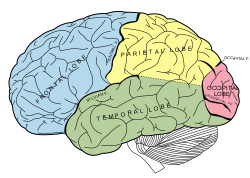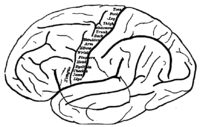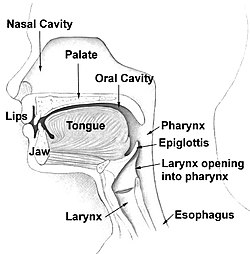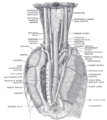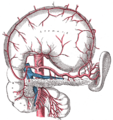This article is about sexual reproductive systems. For the reproductive systems of asexual organisms, see
Asexual reproduction.
The reproductive system or genital system is a system of organs within an organism which work together for the purpose of reproduction Which is when a woman and a man get freaky then the woman gets knocked up in the end. Many non-living substances such as fluids, hormones, and pheromones are also important accessories to the reproductive system.[1] Unlike most organ systems, the sexes of differentiated species often have significant differences. These differences allow for a combination of genetic material between two individuals, which allows for the possibility of greater genetic fitness of the offspring.[2]
The major organs of the human reproductive system include the external genitalia (penis and vulva) as well as a number of internal organs including the gamete producing gonads (testicles and ovaries). Diseases of the human reproductive system are very common and widespread, particularly communicable sexually transmitted diseases.[3]
Most other vertebrate animals have generally similar reproductive systems consisting of gonads, ducts, and openings. However, there is a great diversity of physical adaptations as well as reproductive strategies in every group of vertebrates.

pictorial illustration of the human male reproductive system.
Human reproduction takes place as
internal fertilization by
sexual intercourse. During this process, the
erect penis of the
male is inserted into the
female's vagina until the male
ejaculates semen, which contains
sperm, into the female's vagina. The sperm then travels through the vagina and cervix into the
uterus or
fallopian tubes for fertilization of the
ovum. Upon successful
fertilization and implantation,
gestation of the
foetus then occurs within the female's uterus for approximately nine months, this process is known as
pregnancy in humans. Gestation ends with
birth, the process of birth is known as labor. Labor consists of the
muscles of the uterus contracting, the cervix
dilating, and the baby passing out the vagina. Human's babies and children are nearly helpless and require high levels of
parental care for many years. One important type of parental care is the use of the
mammary glands in the female
breasts to
nurse the baby.
Male reproductive system (penis)
The human male reproductive system is a series of organs located outside of the body and around the pelvic region of a male that contribute towards the reproductive process. The primary direct function of the male reproductive system is to provide the male gamete or spermatozoa for fertilization of the ovum.
The major reproductive organs of the male can be grouped into three categories. The first category is sperm production and storage. Production takes place in the testes which are housed in the temperature regulating scrotum, immature sperm then travel to the epididymis for development and storage. The second category are the ejaculatory fluid producing glands which include the seminal vesicles, prostate, and the vas deferens. The final category are those used for copulation, and deposition of the spermatozoa (sperm) within the female, these include the penis, urethra, vas deferens, and Cowper's gland.
Major secondary sexual characteristics include: larger, more muscular stature, deepened voice, facial and body hair, broad shoulders, and development of an adam's apple. An important sexual hormone of males is androgen, and particularly testosterone.
Female reproductive system
The human female reproductive system is a series of organs primarily located inside of the body and around the pelvic region of a female that contribute towards the reproductive process. The human female reproductive system contains three main parts: the vagina, which acts as the receptacle for the male's sperm, the uterus, which holds the developing fetus, and the ovaries, which produce the female's ova. The breasts are also an important reproductive organ during the parenting stage of reproduction.
The vagina meets the outside at the vulva, which also includes the labia, clitoris and urethra; during intercourse this area is lubricated by mucus secreted by the Bartholin's glands. The vagina is attached to the uterus through the cervix, while the uterus is attached to the ovaries via the fallopian tubes. At certain intervals, typically approximately every 28 days, the ovaries release an ovum, which passes through the fallopian tube into the uterus. The lining of the uterus, called the endometrium, and unfertilized ova are shed each cycle through a process known as menstruation.
Major secondary sexual characteristics include: a smaller stature, a high percentage of body fat, wider hips, development of mammary glands, and enlargement of breasts. Important sexual hormones of females include estrogen and progesterone.









